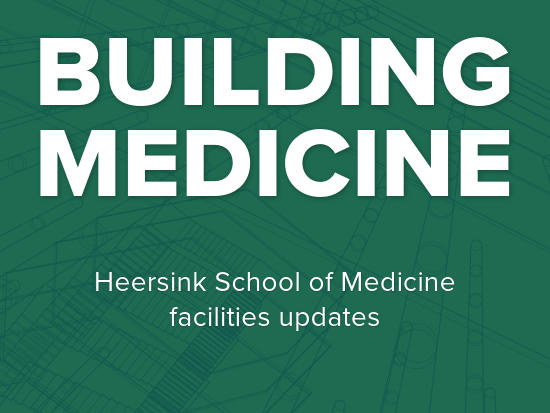 In this second quarterly space and facilities article, we will focus on space assignment and space management. The Heersink School of Medicine has roughly 1.8 million square feet to manage, fund, and account for across 60 campus buildings, and the school is the predominant occupant in over 20 of the facilities. Most of the school’s space [85%+] is assigned to our academic departments, while the remainder is assigned to the Dean’s Office, Medical Education, regional campuses, Heersink institutes, and institutional research cores. All assignable space is organized into three main categories: administrative space, clinical research space, and basic research space; these groups account for 54%, 8%, and 38% of the school’s total space footprint, respectively.
In this second quarterly space and facilities article, we will focus on space assignment and space management. The Heersink School of Medicine has roughly 1.8 million square feet to manage, fund, and account for across 60 campus buildings, and the school is the predominant occupant in over 20 of the facilities. Most of the school’s space [85%+] is assigned to our academic departments, while the remainder is assigned to the Dean’s Office, Medical Education, regional campuses, Heersink institutes, and institutional research cores. All assignable space is organized into three main categories: administrative space, clinical research space, and basic research space; these groups account for 54%, 8%, and 38% of the school’s total space footprint, respectively.
As a school, we can manage and account for this volume of space by closely managing our departmental space assignments. In fact, the overarching mission of a proper and thoughtful space management program is to provide the optimal professional environment for outstanding performance in the execution of Heersink strategic goals in research, education, and patient care. It is a stated goal of the Heersink Dean’s Office to provide guidance to our departments for the allocation and management of research and related office space consistent with effective stewardship for research, teaching, and the interface with clinical research. We can measure space efficiency by observing and calculating factors such as occupancy metrics and the research funding available to support the space. It is important to remember that direct costs, not indirect costs, are used in assessing space. For Heersink, our research space metrics are clearly defined in the space policy.
Administratively, there is a defined system and set of processes used for assessing and gauging space assignments. This involves an annual cycle that begins when our departments prepare and submit their annual space surveys in the fall of every year and concludes when departments have their space utilization meetings with the Dean’s Office the following summer or early fall. The space survey is an annual audit, which is prepared in partnership with the Office of Cost and Space Analysis, which serves to gather important data that is used to proactively manage the institution’s entire space profile, in addition to ensuring that we remain prepared to defend the institutions federally negotiated DHHS F&A [indirect cost] rate. In doing this report, the departments examine the activities occurring in all assigned spaces, the funding sources that exist for those spaces, and the occupants who regularly work within them. Using that same dataset, the Heersink Space Committee [Tika Benveniste, Ph.D.; Victor Darley-Usmar, Ph.D.; Tom Buford, Ph.D.; Kevin Bell, M.Eng; Shaila Handattu, Ph.D., MBA; Alex Boles, MBA; Jason Daniel, MBA; Ryan Outman, MS] schedules annual space utilization meetings with departmental leadership and discusses each investigator’s research programs, including their research funding, space assignments, FTE count, major collaborations, and the department’s overall recruitment plans. These meetings result in MOUs, which help to structure any resulting action items.
The Heersink Space Committee, which was initially convened in 2016, is responsible for triaging and approving space needs across the school, prioritizing facilities-related resource requests, approving facilities projects, and implementing and governance of space utilization policies. As a group, they meet every week to review and discuss an ever-evolving cadre of acute facilities issues, new and existing space requests, renovation and building updates, and space allocation/optimization issues. Recently, the Heersink Space Committee has worked with our IT management group to develop a new space management tool, which is geared to help department chairs and their administrative leadership teams prepare and submit requests related to changes in their space. It is referred to as the ‘space portal’ and it is currently ‘in design’ before going to a beta testing phase. We anticipate the portal will go live in summer 2024. Once published, it will reside on the Office of Research website.
It is the expectation that all Heersink faculty and staff will work through their defined unit leadership for space needs as they arise so that these requests can be triaged and submitted from the department leadership to the Dean’s office through this space portal. The Heersink Space Committee is currently designing the management and review plan for these processes.